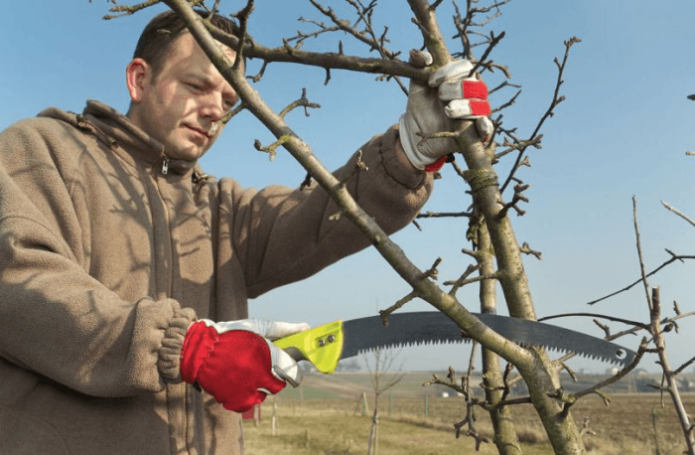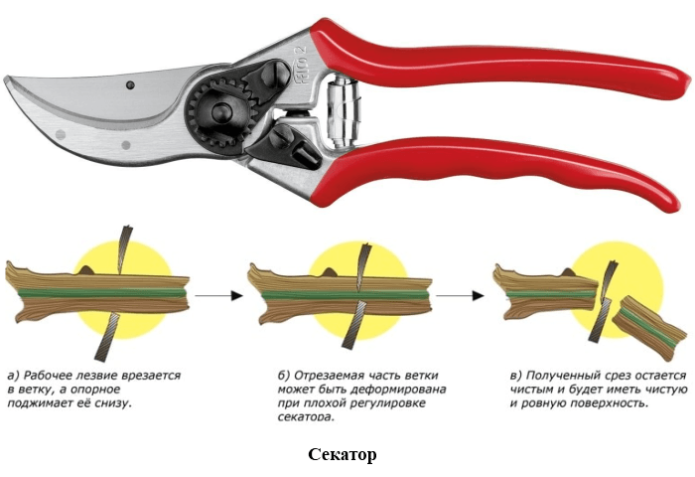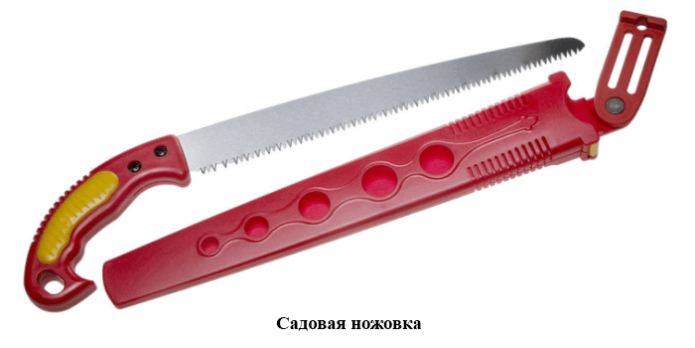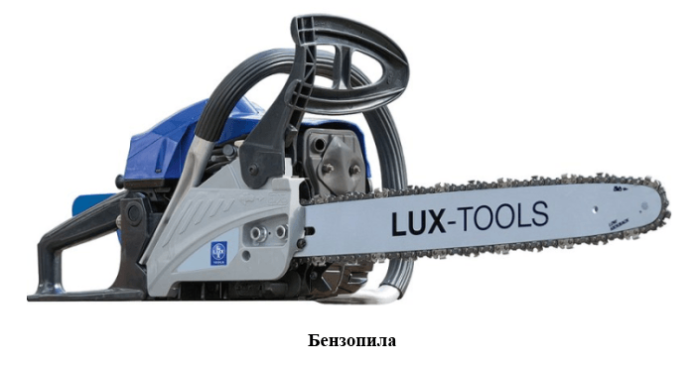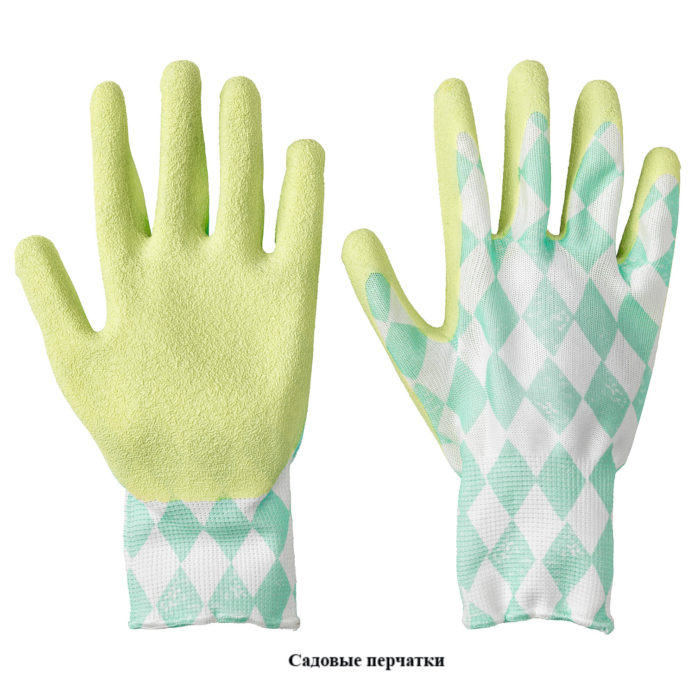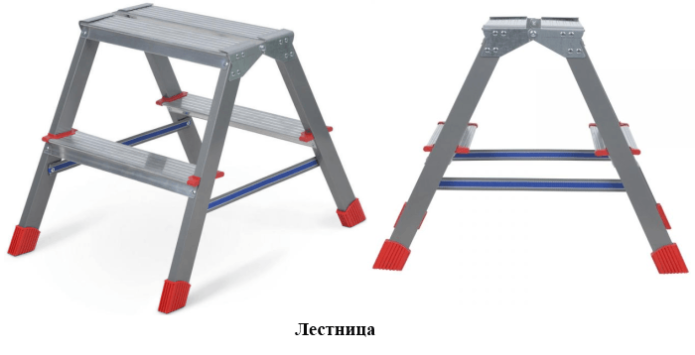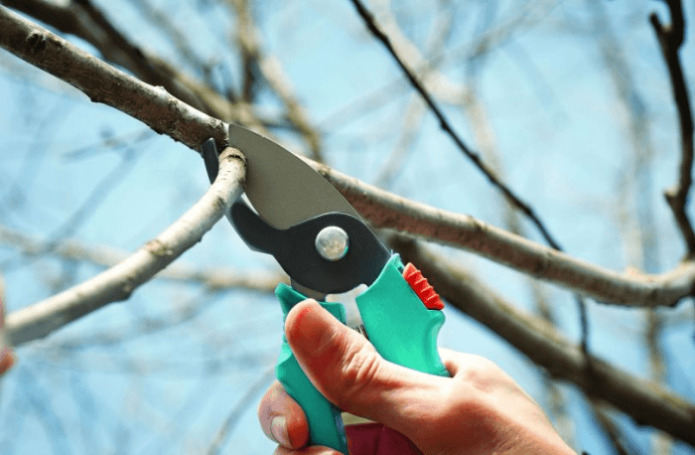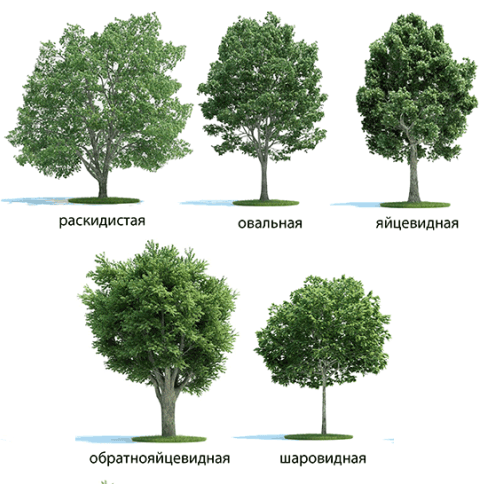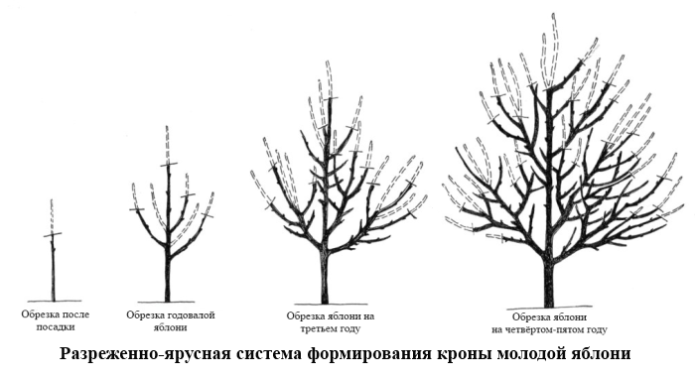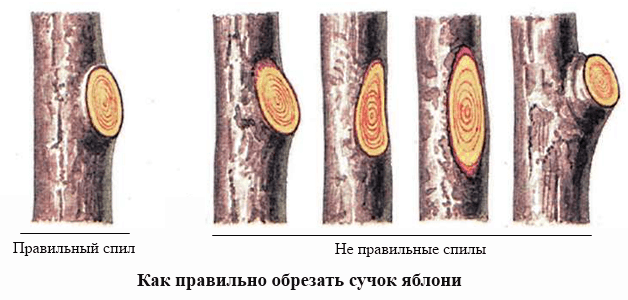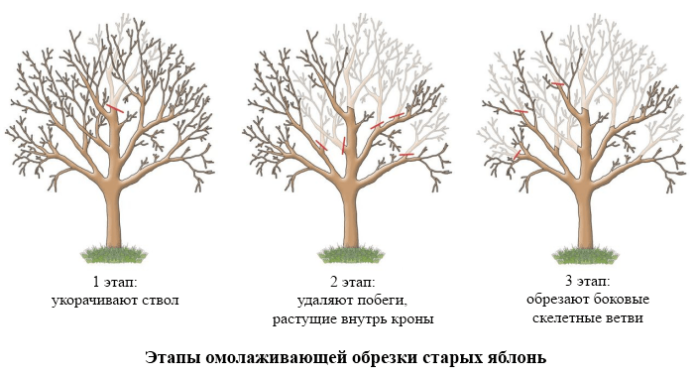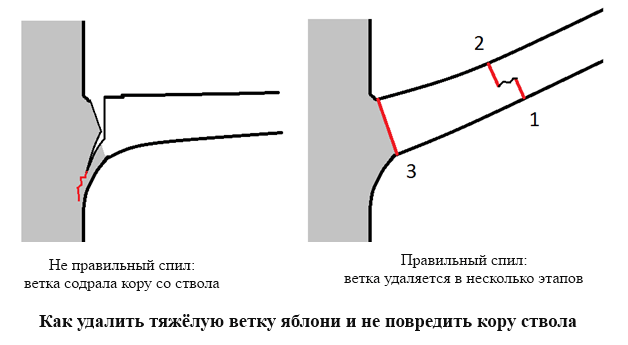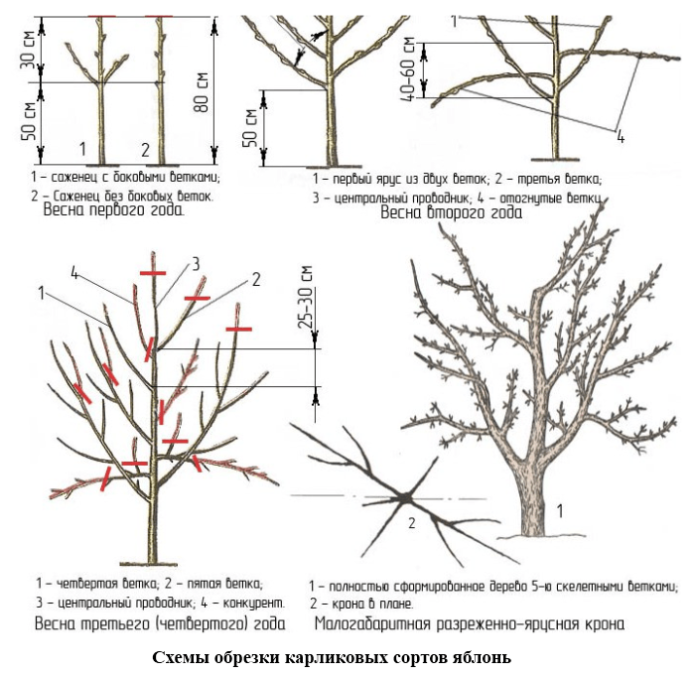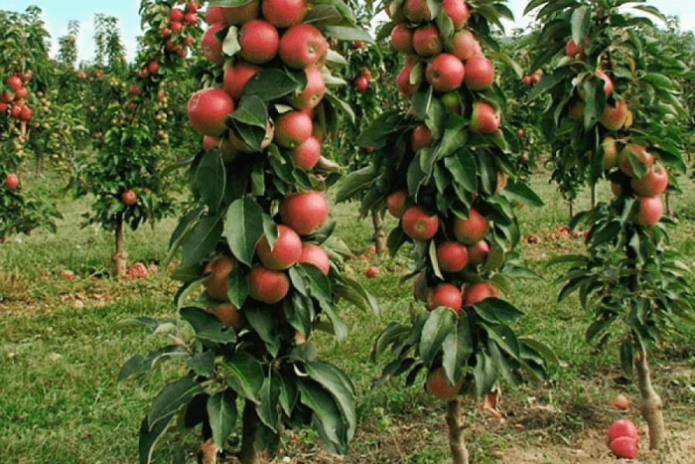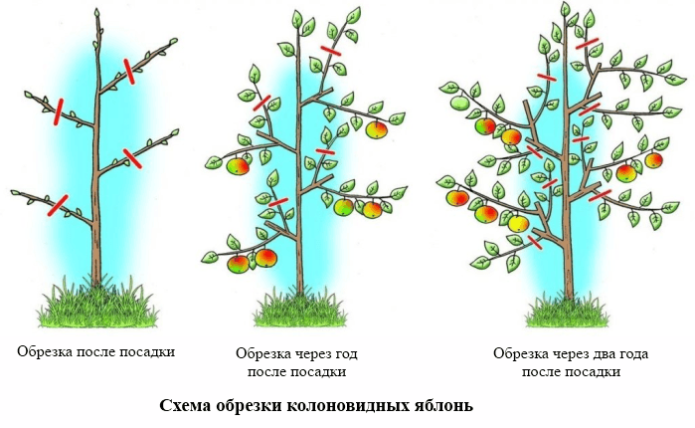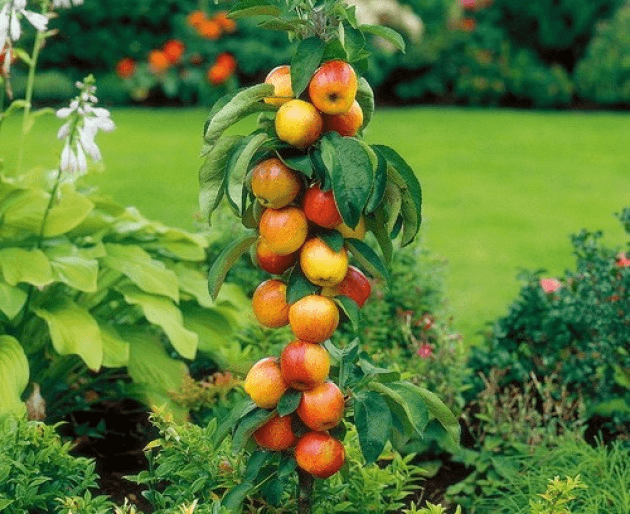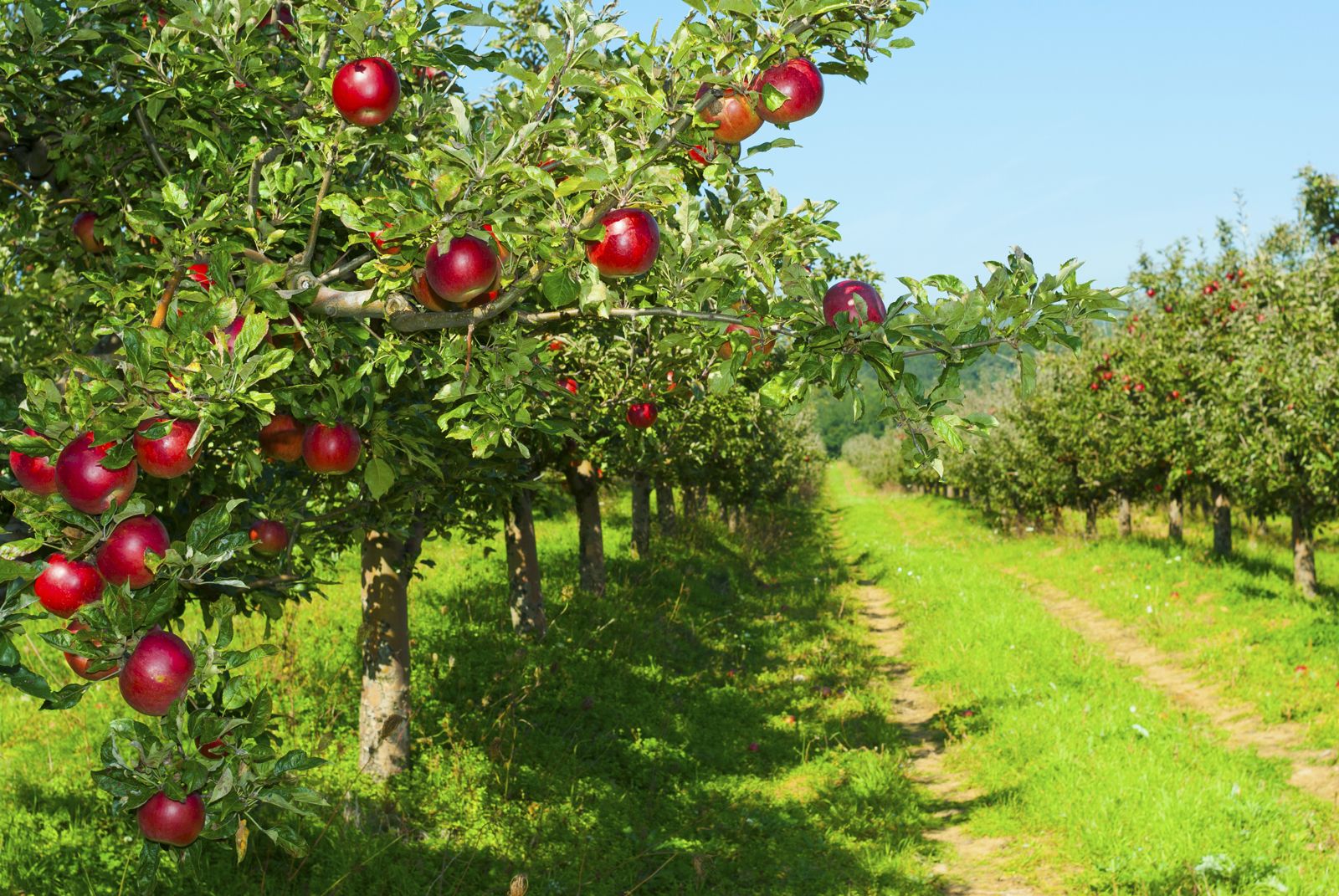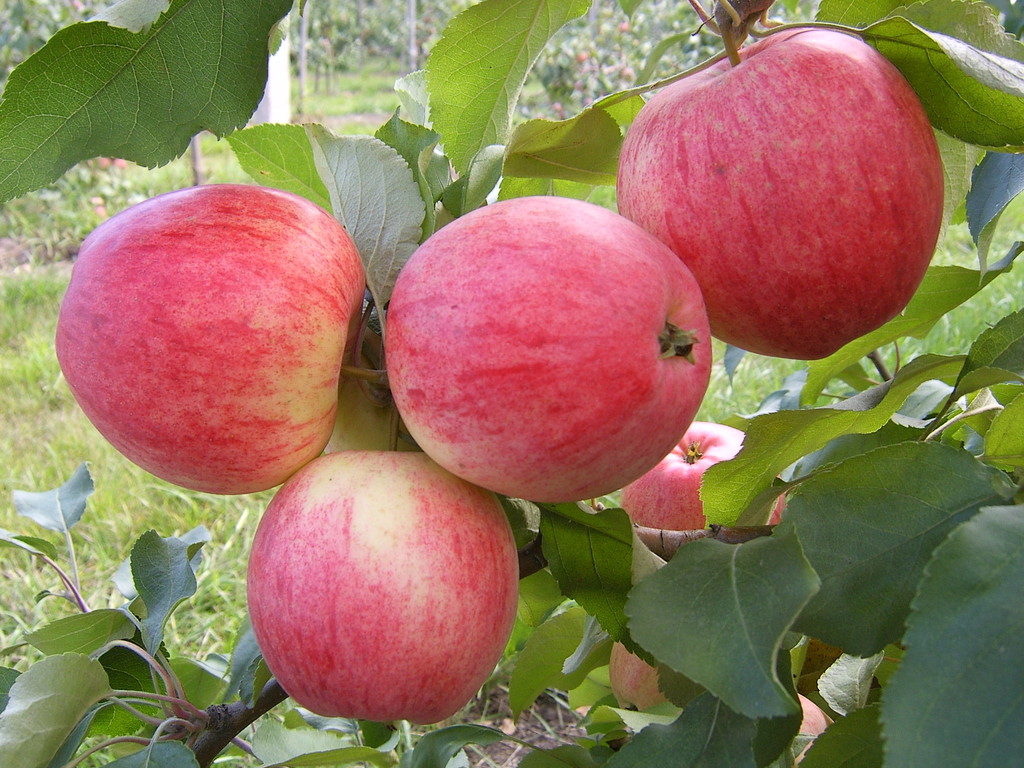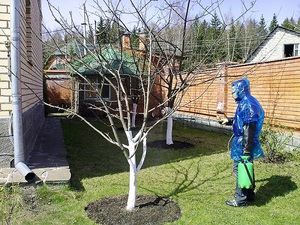Pruning apple trees in autumn allows you to form a strong root system in trees, increase their yield, resistance to frost and disease. Pruned trees get more sun, and their fruits have more nutrients. As a result, apples ripen faster than uncut trees.
Content
Pruning apple trees in the fall: advantages and disadvantages
Apple trees are pruned throughout the year, but most often in the spring and fall months. Autumn pruning has a number of advantages over spring pruning, but it also has some of the disadvantages listed in the following table.
When to prune apple trees - in spring or summer: comparison chart
| Types of trimming | Benefits | disadvantages |
| Spring |
|
|
| Autumn |
|
|
Due to its many advantages, autumn pruning is used not only to form the crown of newly planted apple trees, but also to rejuvenate old trees.
List of materials and tools
To cut flexible, young branches, prepare a pruner, also known as garden shears. This tool is great for pruning young trees.
A garden hacksaw can handle thicker branches. The tool should have a comfortable grip and a strong blade with sharp metal teeth.
A chainsaw is suitable for working with large, heavy branches. With this power tool, you can get a smooth cut.
You can protect your hands while working with gardening gloves. Gloves should be soft so as not to restrict hand movements, but tight to provide adequate protection.
When cutting dry branches, wood dust can fly from the cut. You can protect your eyes from it with special glasses.
When pruning tall apple trees, it is very difficult to get to branches located high above the ground. A stepladder will help facilitate the task.
In addition, comfortable footwear and clothing should be prepared for work to protect the gardener's skin from damage.
When autumn pruning is necessary
The timing of the autumn pruning of fruit trees depends on the climatic zone in which the garden economy is located. Pruning is carried out at a positive air temperature (from 4 ° C), therefore, in regions with a subarctic climate, autumn pruning of trees is not carried out.
Dates of autumn pruning of apple trees in the regions of Russia: table
| Climate | Regions | Autumn pruning dates |
| Arctic | Far North of Siberia | Apple trees are not grown |
| Subarctic | Eastern Siberia, northeastern part of the West Siberian Plain, Kola Peninsula | Do not prune in autumn |
| Monsoon | Far East | End of August - September |
| Sharply continental | Eastern Siberia | September - early October |
| Continental | South and center of the West Siberian Plain | September October |
| Moderate continental | European part of the country | Mid October - early November |
| Subtropical | Black Sea coast of the Caucasus | November |
The weather sometimes brings us unexpected surprises, so the timing of pruning is very conditional and is determined by each gardener independently. Pruning begins no earlier than the foliage begins to fall from the apple tree and the growth of shoots stops. It is important that the cut site has time to drag out before the first frost, so work is carried out at least two weeks before their onset. Do not process the tree in wet weather, in the rain or immediately after it ends. 3-4 days after pruning, the tree is examined, watered abundantly and fertilized in the near-trunk circle.
Features of pruning apple trees of various types: instructions with pictures and diagrams for beginners
The technology for pruning young and old apple trees is different, as well as traditionally tall, dwarf and columnar. Autumn pruning of each of the listed types of apple trees has its own characteristics.
Pruning young apple trees
Young apple trees under 5 years of age are pruned to form the correct crown and intensive formation of young shoots. The crown shape chosen for a young apple tree is preserved and maintained throughout the entire life cycle of the tree (see figure).
With apple trees planted in the autumn months, the following manipulations are performed:
- all branches are shortened by 1/3, leaving at least four strong buds on each of them;
- carefully examine the tree and remove weak, broken pagons;
- the places of the cuts are lubricated with a clay mash or pitch.
Re-pruning of the apple tree is carried out after a year. They act like this:
- identify the four most viable skeletal branches;
- these branches are cut in tiers (the lower ones are longer, the upper ones are shorter);
- the central trunk is cut so that it is 0.3 m higher than other branches;
- if the central trunk has two tops, then one of them is either completely excised, or its growth is directed to a horizontal position;
- all other branches of the tree are completely excised.
It is important that the saw cut does not go deeper into the tree trunk and does not rise more than 2 cm above its surface. The saw cut is made at an angle of 90 degrees.
With regular formative autumn pruning by the age of 5-7, the crown of the apple tree will have a presentable appearance.If you do not leave the tree unattended, then it will certainly please the owner with high yields.
Old trees (anti-aging pruning)
Young apple trees delight with a rich harvest of delicious, juicy fruits. But when a tree gets old, it starts to hurt more often, and its fruits become smaller. Rejuvenating pruning allows to return fruit crops to their former strength and power. This procedure simplifies the processing of apple trees from pests and diseases, increases the frost resistance of plants, increases the size of the fruits and the yield by 20-60%.
Pruning is done in three steps:
- At the first stage, the trunk of the apple tree is shortened. Ultimately, its height should not exceed 2 m. The trunk is cut down over a large branch. This makes it possible to avoid the formation of dry hemp, and subsequently a hollow.
- At the second stage, shoots are removed that grow inside the crown, dried, damaged, woven and crooked branches. They are cut off near the trunk itself. Ideally, the remaining branches of the tree should form a bowl.
- At the third stage, the long lateral skeletal branches are shortened to 2.5 m.
After wintering, young shoots (tops) will appear on the tree, from which in the future it will be necessary to form a crown with fruit branches.
Rejuvenation allows you to get rid of branches that pulled useful substances, but did not participate in fruiting, or hindered the growth of new, strong, fruitful branches.
Trees over 20 years old may not tolerate large-scale pruning. Their crowns are thinned out in two stages:
- Stage I. In autumn, the southern part of the crown is cut off, non-fruiting, twisted, dried, diseased, aged and bare branches are removed. Pruning is carried out just above the outer buds.
- Stage II. A year later, a similar pruning is carried out on the north side. At the same time, remove the vertical shoots formed after the previous pruning.
Remember that when pruning, the old, thick branch can break and rip the bark off the trunk of the apple tree. Such breaks injure the tree and tighten very painfully. To protect the apple tree from injury, cut the branch from the bottom by 2-3 cm.
Gentle pruning allows the tree to recover faster after a painful procedure, gradually renew the crown and increase fruiting.
Video tips for beginners
Dwarf apple trees
If dwarf apple trees are planted in the fall, then immediately after planting they are pruned in order to form a crown. In this case, the branches are cut off by about 1 / 3–1 / 4 part. During pruning, they are guided by the following principle: if the root system of the tree is poorly developed, then up to 1/3 of the branches are removed, if it is good, then up to 1/4.
A year later, 30–35 cm recede from the trunk and branches of the first order are cut at this distance. Under the cuts, external buds are left, from which branches of the second order develop in the future. These buds should not form sharp-angled forks.
Autumn rejuvenating pruning in dwarf trees is carried out a little earlier than in traditional tall apple trees. If after five years the fruits become smaller, and they become smaller, and annual shoots start to grow very slowly, then it is time to repeat the anti-aging procedures.
A feature of repeated anti-aging procedures is the removal of branches that have formed on the tree over the past three years. Each such branch is pruned to a viable second-order branch, which later replaces the deleted one. All the strongest branches are pruned in this way. As a result, an active renewal of the crown occurs, which is accompanied by an improvement in the quality of the fruits (apples ripen less, but they become larger).
Columnar
Columnar apple trees are unusual in that they lack side branches. Due to the fact that the tree does not have a lush crown, all its vital juices are directed to the development of fruits. Such apple trees give many rather large apples, but with intensive fruiting, they must be tied up and watered weekly.
In columnar apple trees, the main and only shoot cannot be cut off.During the rejuvenation of such trees, only competitive shoots with an apical bud are removed. Old columnar trees are rejuvenated in a more dramatic way: their trunk is cut at a height of 0.7-0.8 m.
Pruning of columnar type apple trees is done gradually, the main thing for a beginner in this matter is not to harm the trees:
- In the fall of the first year of life, the branching side shoots are removed, leaving "hemp" from them with two buds. The next year, these buds will grow strong, viable branches.
- The next fall, of the two formed shoots, the most horizontal are left. Vertical shoots are pruned back to two-bud stumps. The main trunk is not touched.
- In the third autumn, a branch that bore fruit last year is removed, and two young shoots are pinched according to last year's scheme (see figure).
For the complete formation of the crown of a columnar apple tree, it will take from 3 to 5 years. After that, pruning is reduced to removing old and thickened branches. Maintenance pruning stimulates the growth of young shoots and increases the yield of the tree.
One of the most common mistakes is leaving a lot of fruiting branches. If after 3-4 years these branches are not replaced with young ones, the yield of the tree will decrease and it will become more susceptible to various diseases and pests.
Pruning a columnar apple tree in the fall: video for beginners
Caring for a pruned apple tree
Apple trees that are pruned in the fall require special care. The sections formed after the excision of the branches must be treated with oil paint, garden varnish or a mixture of vitriol and lime. This will prevent harmful bacteria from infecting the wound.
Garden var is bought in a store or prepared at home. It includes the following components:
- vegetable oil;
- beeswax;
- fat;
- alcohol;
- resin;
- grease or drying oil;
- agrotechnical compositions.
Garden var is applied to sections in a cold or warm state.
Cold var
To prepare a cold liquid, you will need:
- rosin (250 g);
- medical alcohol (0.5 l);
- melted fat tail or beef fat (10 g);
- wood resin (10 g);
- resin (5 g).
Var is prepared in the following way. All ingredients, except alcohol, are mixed in a small refractory container and heated over medium heat. Medical alcohol is gradually poured into a well-heated composition. The prepared var is cooled and cooled, applied to tree cuts.
Warm pitch
To prepare a warm garden varnish, you will need the following ingredients:
- turpentine (500 g);
- rosin (500 g);
- linseed oil (250 g).
All ingredients are mixed and heated over low heat. Warm pitch is applied to the tapes, which are wrapped around the apple tree cuts.
Other compositions
Oil paint is suitable for processing apple cuts. Other types of paint, whitewash, nitro enamels are not suitable for solving this problem, since their aggressive components burn the bark.
Pruning apple trees in autumn is one of the most important garden care activities. This procedure rejuvenates trees, relieves them of pests, improves the appearance of the crown, and helps to increase yields. Pruning should be done regularly and competently. Then the apple tree will delight you with good health and a good harvest of large, tasty apples.
